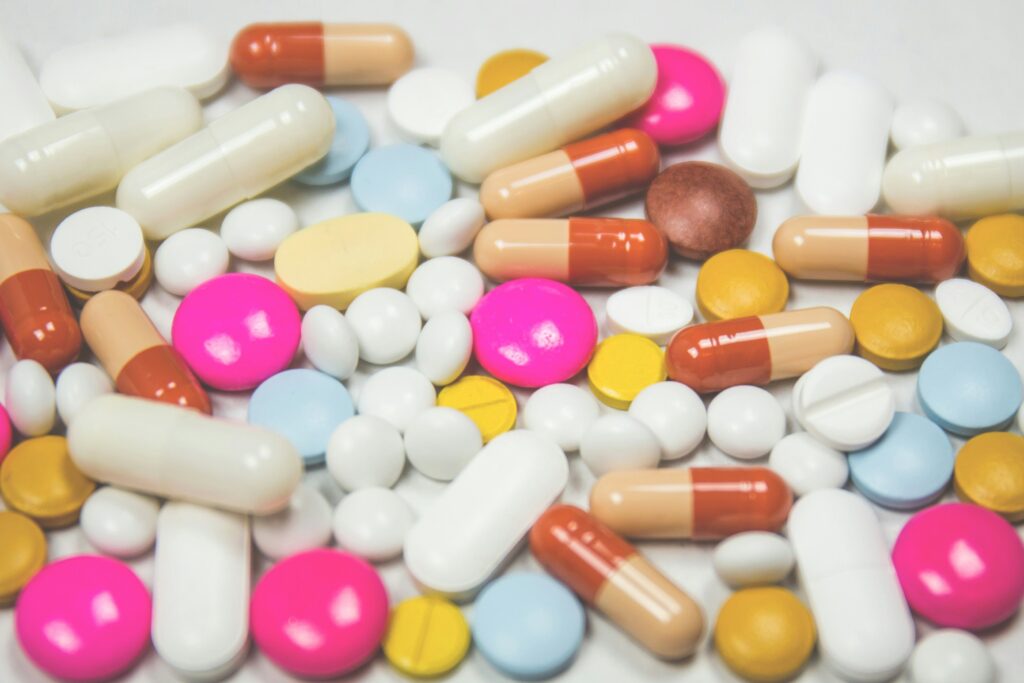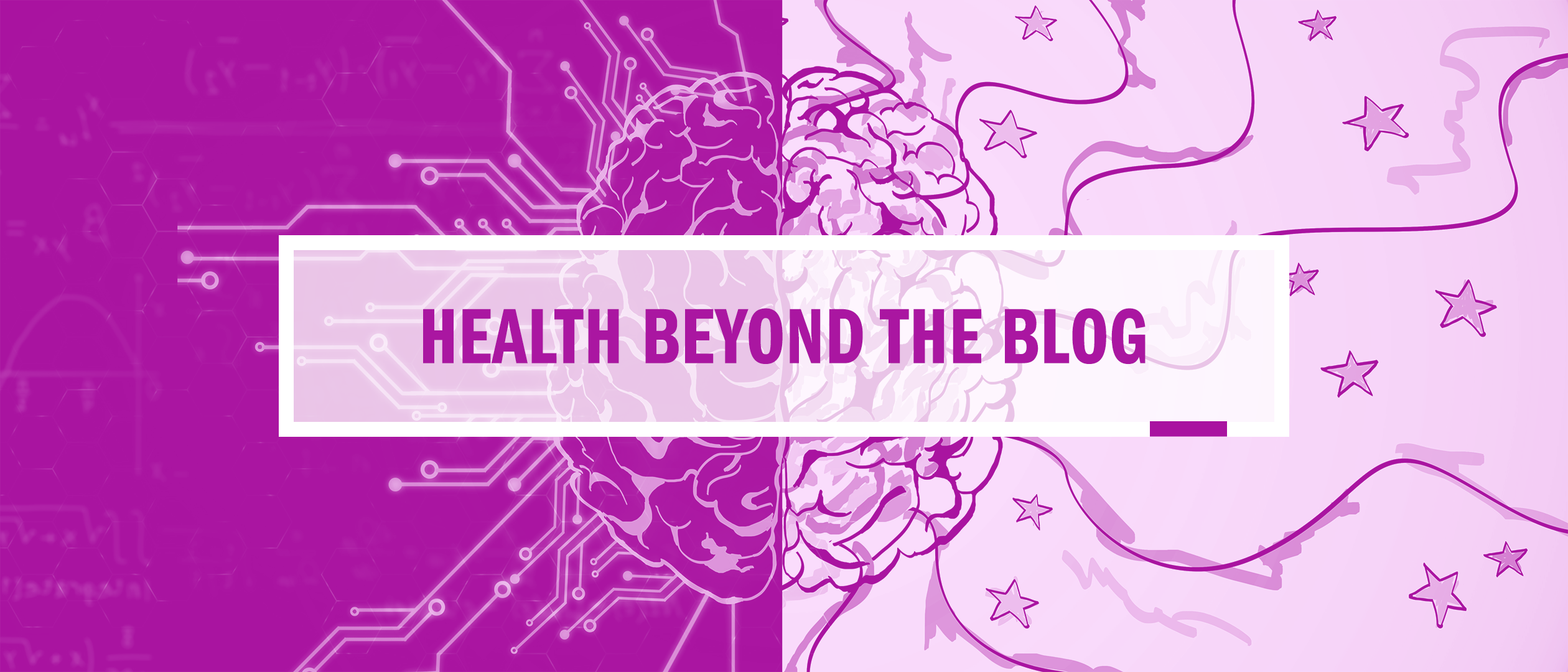New from the @EmoryCSHH News Team: Weight-loss drugs in the UK, why health insurance is tied to jobs, declines in drug overdoses, therapeutic food shortages in Africa, facing dementia and cognitive decline alone.
The Club Drug MDMA is Finding a New Use in Therapy to Treat Post-Traumatic Stress Disorder
By Julia Roth
Evidence shows that individuals struggling with PTSD have high levels of neuroticism, which is a personality trait defined as “a tendency toward anxiety, depression, self-doubt, and other negative feelings.” However, under the influence of MDMA, feelings of “openness” are heightened. This leads researchers to wonder: Could MDMA be combined with therapy sessions, as MDMA-assisted psychotherapy, to make a long-lasting change in improving the mental health of those struggling with PTSD?
The club drug known as MDMA, molly or ecstasy — chemical name, 3,4-methylenedioxymethamphetamine — is a stimulant used by millions in party settings to enhance well-being and increase energy. Despite its controversial reputation and legal status, emerging research suggests that MDMA-assisted therapy could offer a breakthrough in treating post-traumatic stress disorder. This reexamination challenges long-held views, presenting a case for the drug’s ability to foster openness and healing in those plagued by PTSD.
The known effects of MDMA make researchers think this might be possible. “The drug reduces the person’s guardedness to engaging both with the therapist and with their own memories, so they are more accepting and forgiving of things that have happened to them that might make them feel shameful or fearful,” says Dr. Boadie Dunlop, associate professor of psychiatry and behavioral sciences and director of mood and anxiety disorders program at Emory University School of Medicine, who has been an investigator on more than 70 trials evaluating MDMA and psilocybin for PTSD and major depression. “The MDMA kind of brings all that protected guardedness down, so that the person can more easily or more fully engage in the therapy that’s delivered.”

In fact, therapy may be a crucial addition, Dunlop adds: “You are not going to overcome PTSD by taking MDMA itself. Unless you have some kind of intervention to help you move through the trauma, all you’re doing is being open for a while and then you close back up again.”
MDMA-assisted therapy blends typical therapy tactics with an innovative method that helps the patient look ‘inwards.’ Before the session begins, the patient and therapist meet so the patient can establish intentions regarding the aspects of themselves they want to explore and heal. The MDMA is then administered, and the session lasts around eight hours. Unlike typical therapy, where patients decide the frequency of their sessions, MDMA-assisted psychotherapy is completed once a month for the duration of three consecutive months.
“There are invitations for the participant to wear headphones, where the music is coming in,” says Jamie Beachy, a psychedelic therapy practitioner, who was a sub-investigator for MAPS Phase 3 clinical trials, researching the safety and efficacy of MDMA-assisted therapy for the treatment of PTSD. “And then they might also wear eye shades. So there’s really an invitation for the person to go inward with support of the therapists who are right there with them.

Challenges and Risks
The effectiveness of MDMA assisted-psychotherapy truly relies on the therapist and their skills; MDMA makes the patient open, but it is the therapists’ responsibility to guide the patient on how to use this openness as a treatment skill.
There are difficulties, however, associated with using MDMA as a general treatment for all people with PTSD. Many individuals who suffer from PTSD also experience other mental disorders that cause psychotic symptoms, and past research indicates that MDMA may exacerbate these symptoms, further complicating their condition. Thus, researchers are only investigating the unforeseen risks associated with using MDMA to aid individuals with PTSD and no psychotic disorders.
Those patients may also be at risk of physical effects, though. Dunlop adds “You cannot research interventions in medicine for benefit without also looking at the potential for harm. And the harms from MDMA can be simply physiological ones like high blood pressure, but that could lead to stroke or heart attack, to psychological dependence.”
MDMA-assisted therapy also faces significant hurdles due to the public’s deep-seated stigma against MDMA, often tied to its recreational misuse. People associate the highly addictive drug with its street names, ‘molly’ or ‘ecstasy.’ When people think of these drugs, they equate them with partying and illegal behaviors, which can often lead to detrimental consequences, such as death. It is important for the public to understand, though, that the drug itself rarely causes death. It is the repeated, dangerous behaviors that occur and the other drugs taken when under the influence of the MDMA. Joseph Palomar, an associate professor at New York University (NYU) Langone Medical Center and research affiliate at the NYU Center for Drug Use and HIV/HCV Research, said in a piece posted at The Conversation on December 8th, 2018 that “as drugs like MDMA and psilocybin move back into the spotlight as having therapeutic value, we must understand that while we may see various drugs as having “bad” uses, this doesn’t mean they are “bad” substances. Some of these drugs appear to be very useful in medical or therapeutic contexts.”

The Future of MDMA Therapy
Given the trajectory of cannabis, which was first approved for medical purposes and later legalized for recreational use, will MDMA follow a similar path? MDMA will not be approved for recreational use; the regulatory packet, which has recently been submitted to the FDA for approval, explicitly makes this clear. MDMA is currently a Schedule I substance, along with drugs like cocaine and heroin, since it is deemed to have no medicinal properties. The regulatory packet requests that the drug be rescheduled from a Schedule I substance to a Schedule II substance, which are substances approved for medical purposes. A response approving or denying the request is likely to be given later this year.
It is important to emphasize, though, that Schedule II drugs are still regarded as highly addictive. Therefore, researchers are focusing on their addictive properties during clinical trials to ensure they do not compromise MDMA’s therapeutic potential. From the data collected so far, no evidence of long-lasting addictive properties has been indicated following MDMA administration in a medical setting. Furthermore, additional measures are being taken to ensure that MDMA is only used in appropriate medical settings, which will further aid in reducing the stigma surrounding the drug.
Dunlop affirms that “there is likely to be some sort of monitoring system so that each prescription will be monitored by a federal agency to assure that usage is appropriate in some way or form. This is because oftentimes physicians use drugs approved by the FDA for treatment of specific conditions for ‘off-label’ purposes.”
The evolution of MDMA from a club drug to a therapeutic agent for individuals with PTSD highlights the progressiveness of medical research, demonstrating a shift in perspective regarding substances. Moreover, it also serves as a reminder of the vigilance needed to ensure that drugs are used responsibly and ethically. Hopefully, with each new discovery, there will be a reduction in the stigma and complexities surrounding the drug, in turn fostering a new societal understanding of all substances.


